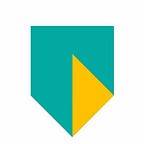Do you need a blockchain? Here’s a more relevant question.
By Tim Blankers
The blockchain hype is hard to miss. Its potential has been recognized. White-papers have been written. Experiments have been done. Now where can we find real adoption?
The inconvenient truth is that implementation is a bit more complicated. And it’s not because of “the” blockchain. Actually, that’s the easy part.
To understand why, let’s start with a basic definition of a blockchain: A blockchain is a data structure used to create a shared ledger.
Simply put, it is a format for storing transactions, with guarantees over data integrity, readable by computers. Nothing more, nothing less.
Each block contains a list of transactions, some metadata and a reference to the previous block. A computer can read this data structure to create a financial ledger.
Your own blockchain
You could run a private blockchain on your own computer without telling anyone about it. Is this a censorship resistant ledger? No. Does this ledger eliminate fraud? Not really.
You could store anything on this ledger because you control the ledger. If you want to virtually own the biggest diamond in the world, just put it in your own blockchain! Nobody is going to stop you.
So, a blockchain as a data structure by itself is not that interesting. Neither is the question if you need one. However, there is a place where it really shines. This becomes clear in the bigger picture of digital ecosystems.
Digital ecosystems
An ecosystem is a network of actors who create value through both collaboration and competition. A digital ecosystem is one in which computers do most of the talking, not humans. Yet computers communicating in a network is not necessarily risk-free.
This poses a real business problem. Say, you are an importer, buying large quantities of commodities. If you were to buy heaps of coffee beans, there are various risks involved. Can you trust the counter-party? What about the transporters? Or more generally, how is trust established across an entire digital ecosystem?
Distributed trust
Trust is complex and involves a lot of aspects. In this context I believe it boils down to two simple questions:
- What constitutes as a legitimate transaction?
- What is the collective timeline in which we all agree transactions to happen?
A blockchain data structure by itself won’t make a transaction legitimate. Neither will it provide the ecosystem a shared timeline. For these reasons two new concepts are needed (next to the shared ledger): the accounting model and the consensus model.
- The Accounting Model verifies transactions. It has rules and processes to let computers determine if a transaction complies to business, legal and regulatory rules. These could be captured in smart contracts, but other ways exist.
- The Consensus Model orders transactions. It provides a mechanism for computers to collectively agree upon a shared timeline of transactions. This could be done using mechanisms such as Proof of Work, but other ways exist.
- The Shared Ledger stores transactions. It uses a data structure for computers to efficiently store and exchange potentially large amounts of transactions. This could be done using a blockchain, but again, other ways exist.
An accounting model formulates the boundaries at which business may occur. It formulates the rules of the game. A consensus model has impact on power structures and partnership dynamics.
All three combined form a model to operate a digital ecosystem. At ABN AMRO we encourage people to understand the bigger ecosystem picture. Blockchains are only a part of the puzzle.
This also makes it clear why blockchain implementations take so long. Entire digital ecosystems are created from scratch. This is complicated because of the many stakeholders and their needs. Komgo and the pilot with Samsung are good examples of this.
Ecosystem foundation
Building a solid ecosystem foundation takes time. Think about governance, standards and infrastructure. These discussions have to be held with all stakeholders. Including customers, partners, competitors, suppliers and regulators. Only then can we start building and connecting apps that solve real world problems.
If there’s one thing you take away from this article: blockchains are just a piece of the puzzle. Try to understand the bigger picture, the digital ecosystem and your role in it.
About the author:
Tim Blankers, Enterprise Architect
Tim is passionate about technology and is involved in a number of projects to design and build digital ecosystems. As an IT architect, he focuses mainly on the bigger picture: laying the right foundations for security and privacy and effectively deploying the correct technology to meet clients’ needs.
